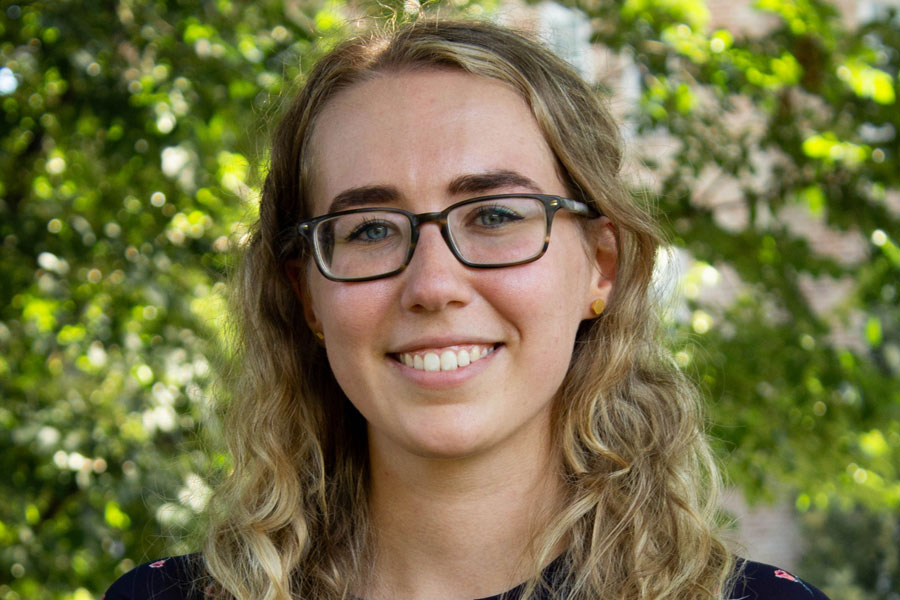Leveraging the Relationship Between Development and Sustainability

Lidia Kovacevic
Master of Arts in International Relations
What encouraged you to apply to Johns Hopkins SAIS?
I was drawn to Johns Hopkins as one of the best international relations schools in the country but also one that put a large emphasis on quantitative skill-building. As someone who did not have as many opportunities in my undergraduate school to pursue quantitative skills, Johns Hopkins offered a way to gain the skills necessary to pursue a career in monitoring and evaluating international development programs, something that typically requires a combination of quantitative and qualitative skills. Additionally, Johns Hopkins’ proximity to development implementers and government donors in D.C. meant that I could find internships and practicum opportunities to help build professional networks. Finally, anytime I encountered a SAIS alumnus, they could not help but heap praise upon the program and offer me advice, even before I had committed to the program. This widespread appreciation for the school and deep connections even across class years helped confirm that this was the ideal program for me.
What were you doing before attending the school?
Prior to coming to Johns Hopkins, I worked as a Program Manager for a Global Health Supply Chain program in South Sudan and Cameroon implemented by Chemonics International. Our program was funded by USAID and aimed to help achieve health goals for HIV/AIDS, Malaria, and family and reproductive health across the world. In South Sudan, we focused primarily on expanding reproductive health programming and increasing access to family planning commodities for South Sudanese women. This experience introduced me to the intersection of humanitarianism and international development as well as the importance of global health. The majority of my time at Chemonics was based in D.C., at the home office, but my role did take me out to South Sudan in early 2021, where I completed a short assignment to provide finance and operations training to office staff. The time in Juba reinforced my desire to continue working in the international development sector but from a monitoring and evaluation role. Prior to that role, I worked for a year at a cyber-security start up in Alexandria, Virginia, applying business analytics and cyber-security concepts to the small-to-midsized business market.
What program are you in and what do you hope to gain from it?
I am in the Master of Arts in International Relations program with an intended topical focus on Development, Climate, and Sustainability and regional focus in Africa. One of the reasons why I picked SAIS was the emphasis on the relationship of Development and Sustainability, key components of the international development industry that is not prioritized nearly enough. My goal is to take full advantage of SAIS’s quantitative programs to build skills for an eventual career in monitoring and evaluation of development programs, while still taking the opportunity to experience the full breadth of SAIS’ faculty. I’ve taken a fairly broad scope of courses within my focus area to help narrow down my technical interests, something that the new curriculum has allowed me to do fairly effectively. By taking a mix of classes, from Global Food Systems and International Migration, to Humanitarianism, Aid, and Politics, I’m attempting to round out my professional experiences in the global health sector, that I can draw on in my future career.
What has been one of your favorite experiences or classes at the school so far?
One of my favorite classes so far at SAIS has been International Migration, Development and Diasporas taught by Dr. Devesh Kapur. Dr. Kapur does an incredible job providing a baseline in an extremely complex and pertinent topic while encouraging discussion from everyone, whether they have a background in international development and migration, or not. As a first-semester, first year, this class was an incredible opportunity to dive straight into a grad-level class and reinforced why I decided to go to grad school and why I chose SAIS specifically. I would definitely recommend anyone who has the opportunity should take this class!
As a first year, what are some things you are looking forward to?
I am really looking forward to the opportunity to take an international development practicum in my second year. SAIS’s professional capstone and practicums were one of the incentives for choosing SAIS’s MA program, as it would help me build my resume with academic and professional skills. Additionally, SAIS’s location in D.C. would mean that the practicum opportunities are incredibly diverse and would hopefully allow for in-person meetings and presentations.
What do you hope to do with your degree after you graduate?
I hope to use SAIS to gain further quantitative skills and build my development experiences to pursue a career evaluating and building sustainable development programs. Throughout my time working on and in South Sudan, I saw firsthand what happens if and when programs are not built sustainably, with monitoring and evaluation methods at the forefront. As such, my aim is to learn how to use data-driven solutions and tools to promote more effective programming, something that SAIS’s quantitative curriculum is well-positioned to help me achieve. Ideally, I’d like to explore these skills from an international non-profit such as Save the Children or CARE International or multilateral organization such as UNICEF.
Enjoyed reading Lidia's experience? Learn more about our Master of Arts in International Relations.
Back to Student Stories